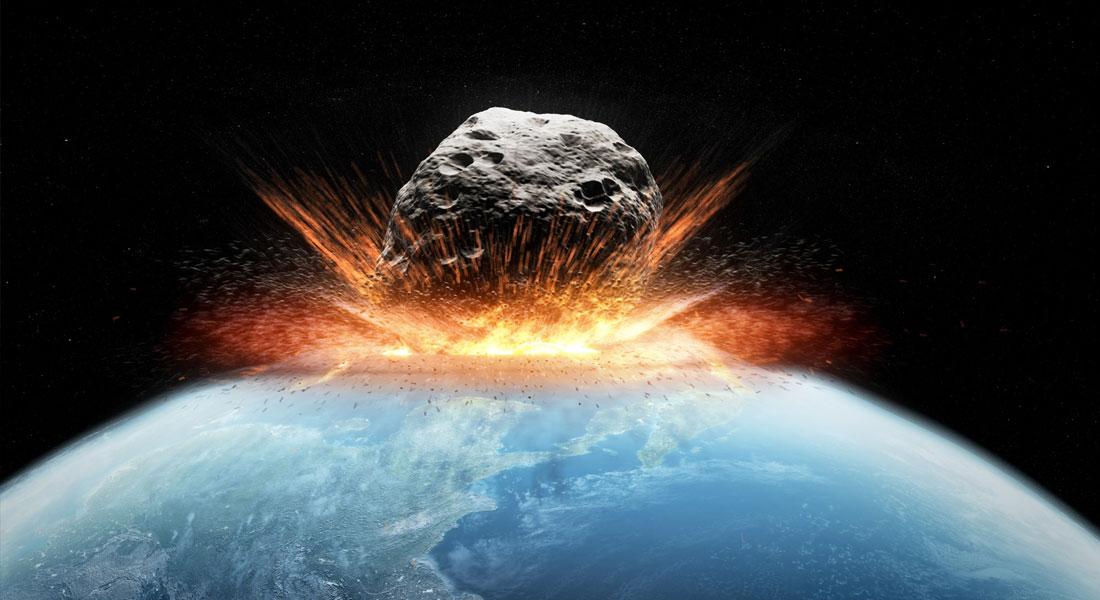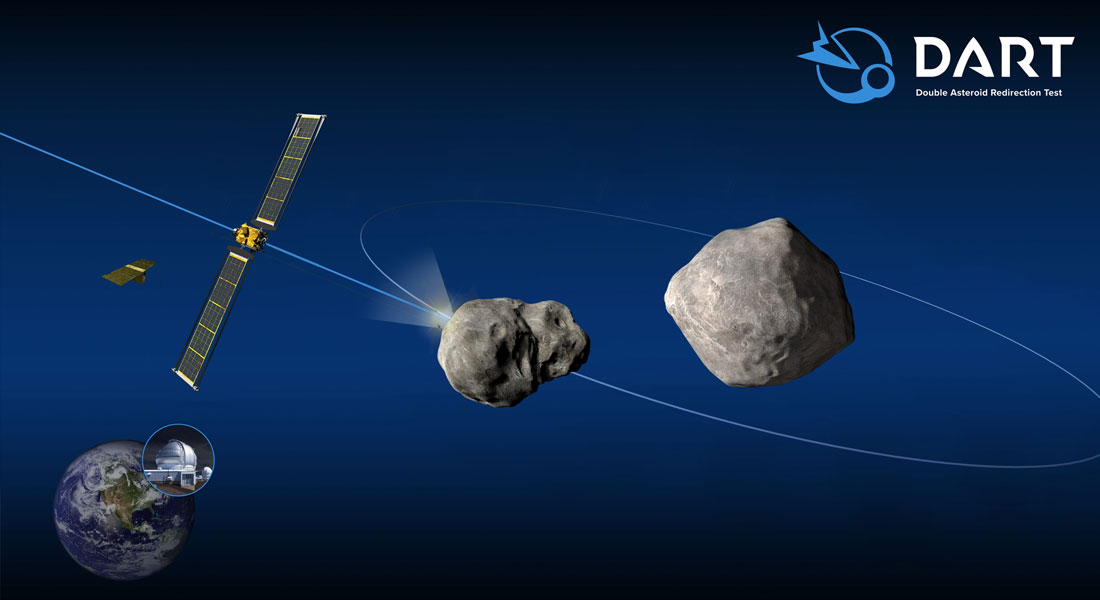First ever asteroid hit by spacecraft could save the Earth from impact
Humanity’s first attempt to re-direct asteroids that could collide with Earth, the NASA Double Asteroid Redirection Test satellite (DART), successfully impacted the 150 meter large moon Dimorphos orbiting the 760 m diameter Near Earth Object (NEO) Didymos. A team of researchers from the Niels Bohr Institute, University of Copenhagen, participated in determining the effect of the collision, by performing extensive observations before and after the collision, from the Danish 1.54m telescope in Chile.

First attempt ever to change the direction of another cosmic object
The Didymos-system was 11 million km from Earth at the time of the impact. It was not on collision course with Earth, but the experiment was the first test of how humanity can re-direct cosmic objects that in the future could otherwise hit Earth.
The result and scientific analysis of the observations of the impact were published as an accelerated pre-view at the homepage of the scientific journal Nature in March, and will appear in print in Nature’s theme issue on the results of the DART mission expected on April 20, 2023.
Asteroids and comets are plentiful in Earth’s neighborhood
More than 25,000 asteroids and comets (Near Earth Objects, NEOs) with 150m in diameter or larger cross Earth’s orbit every year.
Collision with a NEO of km size (such as the Didymos asteroid itself) could be the end of humanity, and a NEO the size of its moon Dimorphos could cause regional damage of a scale never experienced before in human history.
Even a 50m NEO could destroy areas of thousands of square km.
The choice to hit Dimorphos with DART was made because of measurability
If the DART satellite had impacted the big Didymos asteroid itself, the effect on its orbit would have been too small to be detectable. The clever choice to hit its small moon Dimorphos instead, is that we could measure the effect of the collision with high accuracy.
Before the impact, we had measured the orbital period of Dimorphos around Didymos to 11 h., 55 m., 17.3 sec. with a precision of half a second. The analysis of the observations from after the impact, now published in Nature, shows that Dimorphos’ orbital period has decreased with 33 minutes due to the collision with DART to 11 h., 22 min +- 1 minute.
In other words, the movement of Dimorphos changed considerably as it was hit by DART.

Now we know: We can actually change the trajectory of small celestial objects
This number is very encouraging for humanity’s possibility to redirect NEOs in the future, when it becomes necessary. If the impact had been fully inelastic, such as the collision of a car into a wall, the decrease in the orbital period would have been only 7 minutes.
The rest was due to explosive heating when the satellite drilled its way through the top layers of the asteroid and heated the material. Steam was propelled back out through the “drilling tunnel” and acted as a natural rocket motor, breaking the speed of Dimorphos almost 5 times more than the push from DART itself could have done.
Asteroid hitting Earth – aren’t we doomed then anyway? - Not necessarily!
The Tunguska event in 1908 made an explosion comparable to 1000 Hiroshima bombs. It destroyed 2000 km2 forest in Siberia and set people on fire 150 km away. It was a lump of ice, a piece of a comet app. 50 m in diameter, that entered the atmosphere at a very shallow angle and exploded in 8 km altitude.
It lit up the sky even in Copenhagen and there is only a time difference of 4 minutes, in comet-time, between Copenhagen and Siberia.
Now, if it had been an asteroid of rock or metal, and if the angle had been a little more head-on, if the timing just slightly less in our favor, the impact could have been thousands of times more deadly! Perhaps even millions of casualties in Europe.
There is a lot to gain for all of humanity in preparing for asteroid-impacts
“The point to make here is that there are countless little coincidences to factor into every individual impact before we can estimate how dangerous it may become”, Professor Uffe Graae Jørgensen explains.
“The DART experiment has shown that an asteroid of the type and size of Dimorphos can be pushed away from Earth-collision course if we find it long enough in advance, such that only a tiny push is needed. This is a very important step forward on the path toward one day being able to save humanity from catastrophes of a dimension never experienced before in history.
But before we are fully there, we also need to know more about how asteroids and comets of different types than Dimorphos react to being pushed, and foremost we need to know where they are.
In a few years the huge LSST (Large Synoptic Survey Telescope; today also known as the Vera Rubin Observatory) will start scanning all of the sky that can be seen from the southern hemisphere every 3 nights. The aim is to detect everything that is moving close to Earth’s orbit and could be a NEO larger than approximately the size of Dimorphos.
But we still need to learn how to move the larger ones, and we still need an instrument that can detect the smaller ones. Even an asteroid only 1% the mass of Dimorphos could cost many tens of thousands of human lives if we are not prepared.
We have no preparedness plan (in Denmark) for what to do if such an asteroid hits Earth. Worth considering is this: If it is not hitting exactly where we stand, the difference between a catastrophe of unknown dimensions and our survival depends on just knowing how to act during the last few minutes before the collision; simply staying away from the windows or seeking down into the basement could in many cases be enough”.
Extra material with more details about the DART experiment
If you are interested in more detailed information about the experiment, click here >>
Contact
Uffe Gråe Jørgensen, Professor
Email: uffegj@nbi.ku.dk
Phone: +45 61 30 66 40

